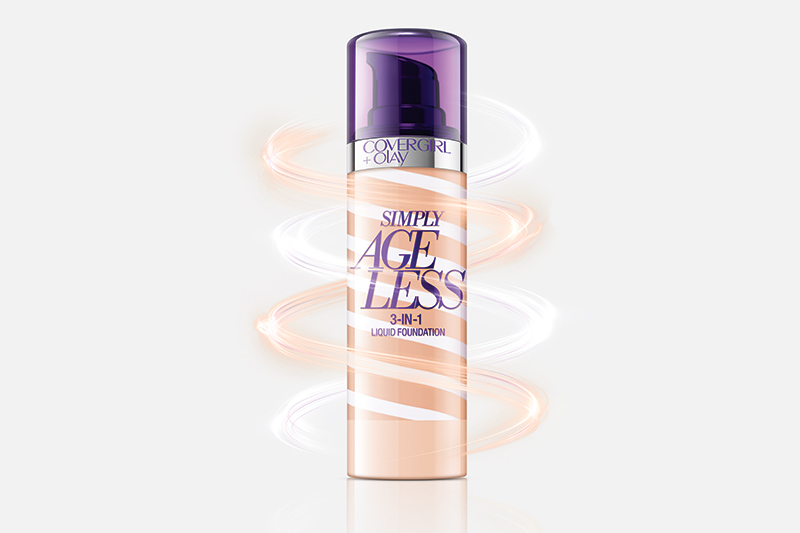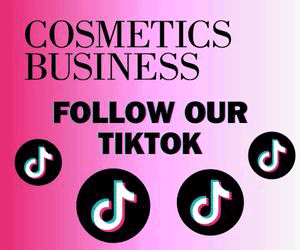
Nick Vaus
While make-up brands are rightly pushing inclusivity regarding skin tone and gender, there is one very large and lucrative group that's still being ignored by mainstream colour cosmetics labels: women over 30. And, with older style leaders opting for bolder looks, why do brands insist on plugging the 'tasteful' and 'age appropriate' to everyone outside of the millennial and Gen Z bracket? Asks Nick Vaus.
Nick Vaus, Partner & Creative Director at Free the Birds – the brand communication and design agency formerly known as DewGibbons + Partners – explores make-up brands that are eyeing the over-30s market.
One of the singularly most uplifting things to happen in beauty is the long overdue inclusion of women of colour in mainstream make-up offerings.
It wasn't until Rihanna's Fenty Beauty launched last year with 40 foundation shades that embracing global skin tones became a must.
In the year since, 40-plus and even 50-plus shade ranges have become commonplace, with new offerings from Lush, Il Makiage, Cover FX, NYX, Flesh and Dior. And the diversity of models used for campaigns has improved beyond previous imagining.
British Vogue Editor Edward Enninful notably featured nine beautifully different women on his 'New Frontiers of Fashion' May cover.
But even as Fenty Beauty was created "for women of all shades, personalities, attitudes, cultures and races", there was something missing (quite literally) from those pictures. Anyone over the age of 25. Thirty at an absolute push. Colour cosmetics has a serious age problem.
Ironically, skin care – once the bastion of absurdly young teenagers selling products aimed at 50-somethings – is doing much better.
As women have started favouring skin health benefit claims rather than 'anti-ageing', according to Euromonitor International, brands are now using appropriately aged women as 'faces'.
Lancôme righted a historic wrong, bringing back 66-year-old Isabella Rossellini for its Rénergie Multi-Glow range, complete with unretouched pictures.
But even as colour cosmetics has seen meteoric growth in make-up as a means of self-expression, most fashion forward colour and MUA brands rarely feature older faces on a regular basis.
Even with non-trend brands, understood as being for more mature customers, I had to scroll back to September 2017 on Laura Mercier's Instagram feed to find a solitary picture of 36-year-old Priyanka Chopra and gave up on Bobbi Brown at July 2017 without finding one evidently 30-plus face.
And even when older faces are seen, it's typically for make-up looks that are that oh-so-slightly- sneering word, flattering – really meaning it tricks the eye into thinking the face in question now adheres more closely to society's standards of beauty, ie absolute youth.
Even at NARS, adverts featuring Charlotte Rampling and Tilda Swinton use make-up that is decidedly low-key, almost non-existent.

CoverGirl is one of the few exceptions, featuring 70-year-old Maye Musk with notably heavy smoky eye make-up. And of course MAC has its claim of being for 'All Ages, All Races, All Genders', occasionally spotlighting its Director of Makeup Artistry Romero Jennings' mother in full bold multi-colour make-up, and its collaboration with 90-something style maven Iris Apfel was an immediate sell-out.
But on a day-to-day basis, older women are pretty much invisible on the MAC timeline. Men get more of a look-in.
This invisibility is a reflection of the big social assumption that there's a certain arc to all women's lives: grow up, attract a man, become a mum, retreat into the background, become a grandma, dress in beige, vanish entirely.
The backlash against Madonna for having the temerity to refuse this is a case in point. "How dare she! Put it away," says the world.
But the world is changing. Not only are women choosing to be child-free, they are working longer, living far longer and spending their fatter wallets on beauty and personal care – up by 68% for 50-64 year olds since 2011, says WGSN. And each is as individual as every Gen Zer and millennial.
Compare and contrast the mild blandness of Zoella or Tanya Burr against older beauty vloggers like Monique Parent or Hot and Flashy. Mutton quite frequently has more taste and substance than lamb... new publications like Goldie magazine fly in the face of the decorum expected of older people, and quite right too. Who wants to be boring for two-thirds of your life?
Many make-up brands explicitly orient their brand propositions around self-empowerment, individuality and breaking boundaries on gender and diversity.
But only if you're young, it still seems; those brands have yet to tackle the (b)older woman. As with anything, seeing is believing.
The more brands elevate their propositions (and formulations) to include attitude, not just age, in their offerings, the more likely it is that women will feel free to express themselves with colour and break those oh-so-outdated social norms... and buy more make-up in the process.




